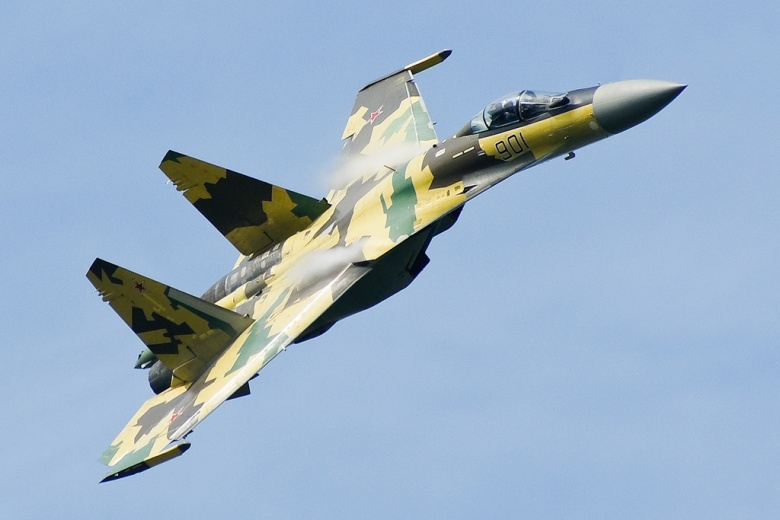The Ka-50 Black Shark helicopter (Russian: Чёрная акула; Chornaya Akula, NATO reporting name: Hokum A) is a single-seat attack helicopter for destroying armored vehicles, slow-speed air targets and manpower on the battlefield.Coaxial Ka-50 helicopter has two three-blade rotors of 14.5-m diameter each. The polymeric composite blade is attached to the hub by a torsion bar. The airframe features perfect aerodynamic outlines, mid-set stub wing, retractable three-leg landing gear and empennage of a fixed-wing aircraft type. The pilot cockpit is fully armored.
Here goes the code of the element you want to show
Mil Mi-28 Havoc Combat Helicopter, Russia
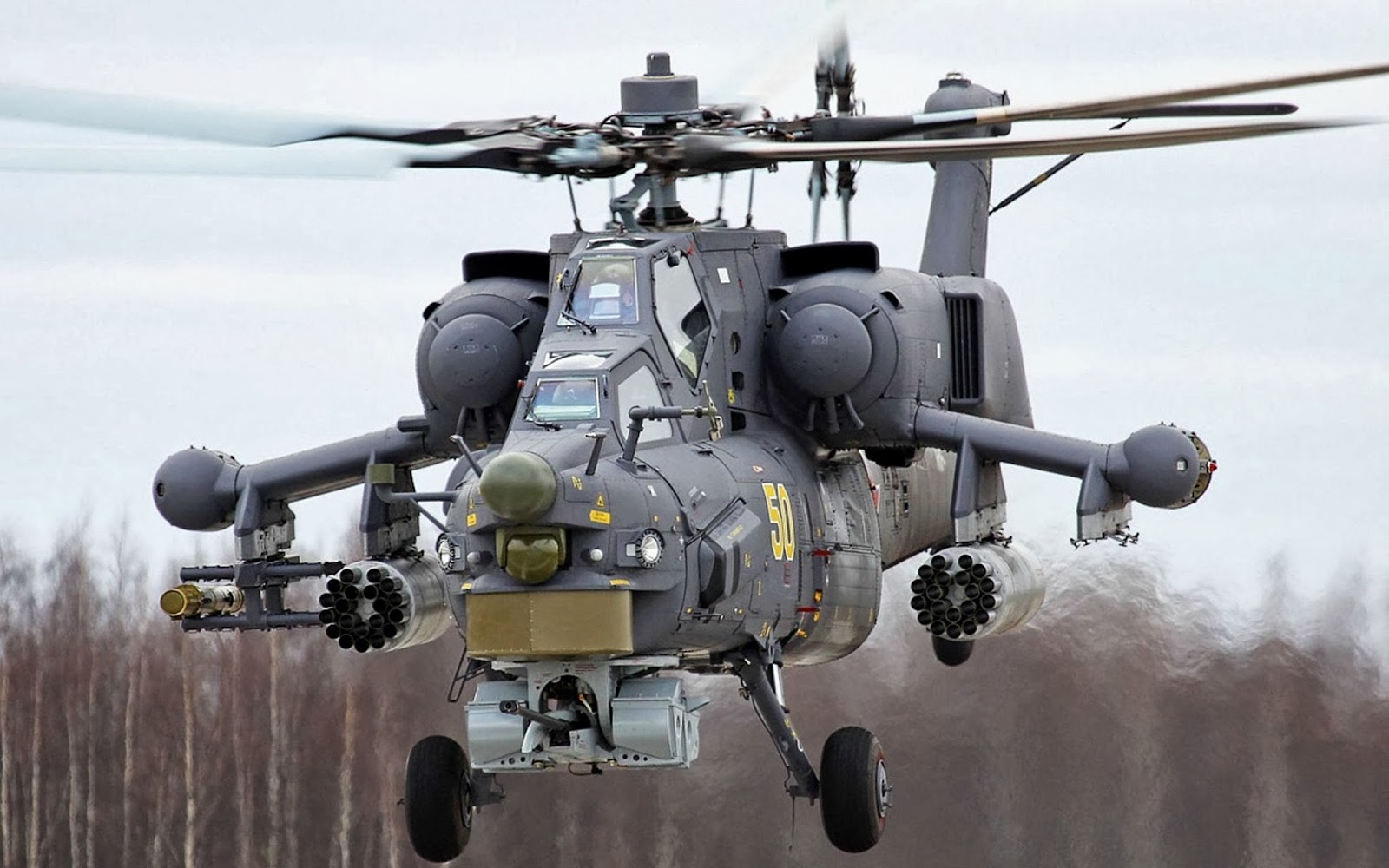
The Mil Mi-28 (NATO reporting name "Havoc") is a Russian all-weather, day-night, military tandem, two-seat anti-armor attack helicopter. It is a dedicated attack helicopter with no intended secondary transport capability, better optimized than the Mil Mi-24 gunship for the role. It carries a single gun in an undernose barbette, plus external loads carried on pylons beneath stub wings.
First flown in November 1982, and designed to fulfil the same role as the American AH-64 Apache which it generally resembles, the agile Mi-28 'Havoc' military helicopter was scheduled to enter full service with the CIS forces in 1992, but lost out to the Kamov Ka-50. The three prototypes had a conventional three-bladed tail rotor but this has since been replaced by a 'delta 3' x-configured rotor comprising two independent two-bladed propellers mounted on the same shaft.
Tupolev Tu-160 Strategic Bomber, Russia
The Tupolev Tu-160 Beliy Lebed (or White Swan,Russian: Туполев Ту-160, NATO reporting name: Blackjack) is a supersonic, variable-sweep wing heavy strategic bomber designed by the Tupolev Design Bureau and engineering complex joint stock company of Moscow and the Kazan-Gorbunov Aircraft Production Association in Tatarstan from 1980 to 1992.
The maiden flight of the bomber was completed in December 1981 and it entered service in April 1987.
Buk-M2E Air Defence Missile System, Russia
The Buk-M2E (NATO name SA-17 Grizzly) is a Russian made mobile medium-range surface-to-air missile (SAM) system designed to defend field troops and logistical installations against air threats. SA-17 Grizzly is an upgraded version of the proven Buk-M1 mobile air defense system and retains its main features. It defeats strategic and tactical aircraft, tactical ballistic missiles, cruise missiles, air-launched missiles, guided aerial bombs and helicopters, including hovering rotorcraft, in the presence of heavy electronic countermeasures and under intense enemy fire. Moreover, it can be used against sea-surface and ground targets. The Buk-M2E SAM system includes combat elements, such as atarget-acquisition radar, a battle management station, self-propelled firing vehicles, an illumination and guidance radar, loader-launcher vehicles, surface-to-air guided missiles, as well as maintenance and repair facilities. The combat elements can be mounted either on tracked or wheeled chassis. Wheeled trucks carry the maintenance facilities. The Buk-M2 can engage a wide variety of targets from aircraft to missiles flying at an altitude of between 10 and 24,000 m out a maximum range of 50 km in given conditions. The SA-17 Grizzly can engage simultaneous of up to 24 targets flying from any direction.
Iron Dome Air Defence Missile System, Israel
The Iron Dome is an effective and innovative mobile defense solution for countering short range rockets and 155 mm artillery shell threats with ranges of up to 70 km in all weather conditions, including low clouds, rain, dust storms or fog. The Iron Dome is developed by the Israeli Defence Company Rafael. Development of Iron Dome began in January 2008, and is virtually complete after just two and a half years. The system uses a unique interceptor with a special warhead that detonates any target in the air within seconds. The Iron dome is a cost effective system that can handle multiple threats simultaneously and efficiently. The Iron Dome system has been selected by the Israeli Defense Ministry as the best system offering the most comprehensive defense solution against a wide range of threats in a relatively short development cycle and at low cost. The Iron Dome System, which is expected to provide defense to residents of Israel's South against rockets launched from the Gaza Strip, is entering into the final stages of performance testing and was even presented this week for the first time in an exhibition of technological weapons which was held at the Rabin military base. The Iron Dome system became operational in early 2011, initially deployed at air force bases in southern Israel. It will be set up in other areas, such as the town of Sderot, during significant escalations along the Gaza border.
SF-260 Light Trainer / Attack Aircraft, Italy
The SF-260 is a two-seat light trainer / attack aircraft marketed as an aerobatics and military trainer. It was designed by Stelio Frati, originally for Aviamilano, which flew the first prototype of it (then designated F.260) on July 15, 1964. Actual production was undertaken when SIAI Marchetti purchased the design soon thereafter and continued with this firm until the company was bought by Aermacchi in 1997. It is an advanced trainer aircraft currently used by civil professional flying schools. About 880 aircraft are currently operational worldwide.
MiG-AT Advanced Flight and Combat Trainer Aircraft, Russia
The MiG-AT advanced flight and combat trainer aircraft is a Russian trainer aircraft that first flew in 1996, designed to replace Aero L-29 and L-39 for the Russian Air Force. The MiG-AT is the first joint aircraft development programme between Russia and France and the first military collaborative project between Russia and the West to reach first flight.Besides the Russian Air Force and Air Defense Forces, Mikoyan sought to export the trainer to India, South Africa, Greece, France and Commonwealth of Independent States such as such Kazakhstan and Uzbekistan.
JL-9 (JianLian-9 ) Trainer / Light Attack Aircraft, China
ianLian-9 (JL-9) also known as the FTC-2000 Mountain Eagle (Shanying) is an advance trainer or light attack aircraft designed and manufactured by the Guizhou Aircraft Industry Corporation (GAIC) of China. The aircraft was designed for the People's Liberation Army Air Force (PLAAF) and the People's Liberation Army Naval Air Force (PLANAF).
Its export version is designated as FTC-2000 (Fighter Trainer-2000) Mountain Eagle (Shanying). The JL-9 was derived from its forerunner, the JJ-7 jet trainer.
Alenia Aermacchi M-346 Master,Italy
The Alenia Aermacchi M-346 Master is a military transonic trainer aircraft. The aircraft is a development of the YAK/AEM-130, a joint programme with Yakolev Design Bureau and Sokol Manufacturing Plant of Russia. In July 2000, Alenia Aermacchi announced that it would cancel the joint project and develop the aircraft alone, as the M-346.
Aero L159 Advanced Light Combat Aircraft (ALCA), Czech Republic
The Aero L-159 ALCA (Advanced Light Combat Aircraft) is a Czech-built multi-role combat aircraft. It is in service with the Czech Air Force. It is derived from the Aero L-59 Super Albatros.Developed by Aero Vodochody to meet the Czech Air Force operational requirements for a light multi-role combat aircraft. The aircraft was developed in the single-seat L159A and two-seat L159B versions.
KAI T-50 Golden Eagle,South Korea
The KAI T-50 Golden Eagle,formerly known as the KTX-2, jet trainer and light attack aircraft is a family of South Korean supersonic advanced trainers and multirole light fighters, developed by Korea Aerospace Industries (KAI) with the American aerospace company Lockheed Martin. The T-50 is South Korea's first indigenous supersonic aircraft and one of the world's few supersonic trainers.
Crotale Short Range Air Defence System, France
The Crotale EDIR (Ecartométrie Différentielle InfraRouge, "InfraRed Differential Ecartometry") is an all-weather short-range anti-air missile, which can be used to intercept low-flight anti-ship missiles and aircraft.The origins of this air defense system lie in South African order. In 1964 South Africa ordered Thomson-Houston (later Thomson-CSF and now Thales) to develop a point defense system. Development was mostly funded by South Africa, and partially by the French government.Developed by Thales Air Defense (formerly Thomson-CSF Airsys) based at Bagneux in France.
These systems were delivered to South Africa between 1971 and 1973. It was locally named the Cactus. Soon after the French air force ordered this system for airfield defense, naming the system Crotale. It entered service in 1972. By 1978 a total of 20 batteries were delivered.
AW129 Multi-Role Combat Helicopter, Italy
The AW129 multirole combat helicopter is the latest variant of the A129 Mangusta (Mongoose) helicopter in service with the Italian Army. It is manufactured by AgustaWestland, a joint venture company, which was originally formed by Finmeccanica of Italy and GKN of the UK, but is now solely owned by Finmeccanica.
Edwards Air Force Base, United States of America
Edwards Air Force Base (AFB) (IATA: EDW, ICAO: KEDW, FAA LID: EDW) is a United States Air Force installation in southern California, located approximately 22 miles (35 km) northeast of Lancaster and 15 miles (24 km) east of Rosamond.Built on a 301,000-acre (470-square-mile) site, it is the second-largest air force base in the US and features the longest runway in the country. The base was opened in 1933. Most of the land at the base is undeveloped or semi-improved and is primarily used for flight testing.
Kings Bay Naval Submarine Base, United States of America
Naval Submarine Base Kings Bay is a base of the United States Navy located adjacent to the town of St. Marys in Camden County, Georgia, in southeastern Georgia, and not far from Jacksonville, Florida. The Submarine Base is the U.S. Atlantic Fleet's home port for U.S. Navy Fleet ballistic missile nuclear submarines armed with Trident missile nuclear weapons. This submarine base covers about 16,000 acres (6,400 hectares) of land, of which 4,000 acres (1,600 hectares) are protected wetlands.
Columbus Air Force Base, United States of America
The host unit at Columbus is the 14th Flying Training Wing (14 FTW) assigned to the Air Education and Training Command. The 14 FTW's mission is to provide specialized undergraduate pilot training for U.S. Air Force and allied officers.
Columbus AFB was established in 1941 as Air Corps Advanced Flying School, Columbus, Mississippi. The commander of the 14 FTW is Colonel John J. Nichols.
Arsenal de Brest, France
The Arsenal de Brest is a collection of naval and military buildings located on the banks of the river Penfeld, in Brest, France. It is located at WikiMiniAtlas48°23′12″N 4°29′48″WCoordinates: 48°23′12″N 4°29′48″W.
Arsenal de Brest is also the headquarters of the French naval and oceanographic service.
Marine Corps Base Camp Pendleton, United States of America
Altus Air Force Base, Oklahoma, United States of America
The host unit at Altus AFB is the 97th Air Mobility Wing (97 AMW), assigned to the Nineteenth Air Force (19 AF) of the Air Education and Training Command (AETC). The wing's mission is to provide C-17 Globemaster III and KC-135 Stratotanker formal initial and advanced specialty training programs for up to 3000 flight crew and aircraft maintenance students annually.
Altus AFB was established in 1943 as Altus Army Airfield (AAF). The 97 AMW commander is Colonel Todd A. Hohn. The Command Chief Master Sergeant is Chief Master Sergeant James M. Powell III.
British Army Land Forces Headquarters, Andover, United Kingdom
The British Army Land Forces Headquarters (HQ Land) officially opened a new complex at Marlborough Lines in Andover, Hampshire, UK in July 2010. The new Land Forces HQ became fully operational in September 2010. It was declared operational by the Minister for Armed Forces Nick Harvey and the Commander-in-Chief, Land Forces (CINCLAND) Gen. Sir Peter Wall.
Fort Benning, Alabama, United States of America
Fort Benning is one of the largest army bases situated near the city of Columbus, US. The base extends from Muscogee and Chattahoochee counties in Georgia to Russell County in Alabama.
CN-235,The Lower Cost Tactical Airlifter
The project was a joint venture between Construcciones Aeronáuticas SA (CASA) and Indonesian Aerospace (PT. Dirgantara Indonesia), formerly known as IPTN, which formed Airtech to manage the programme. The partnership applied only to the Series 10 and Series 100/110, with later versions being developed independently. Over 230 of all versions of CN-235 are in service and have accumulated more than 500,000 flight hours.
Izumo-Class Helicopter Destroyer, Japan
The Izumo class is a new type of helicopter carriers of the Japan's Marine Self-Defense Forces. Two ships of the class are planned. The new ships will replace ageing Shirane class ASW destroyers. The lead ship Izumo was launched in 2013. It was commisioned in 2015. It is the biggest Japanese warship since the World War II. It is even larger than the previous Hyuga class helicopter carriers.
AGM-114 Hellfire II Missile, United States of America
The AGM-114 II Hellfire is an air-to-ground missile developed primarily for the anti-armour role. It is a combat proven tactical missile system using multiple launch platforms based on air, sea and ground.
The Hellfire II air-to-ground missile system (AGMS) provides heavy anti-armour capability for attack helicopters. It is a 100lb class air-to-ground precision weapon delivering multitarget capability and precision strike lethality. The Hellfire II missile is in service with the armed forces of the US and 16 other nations.
T-14 Armata Main Battle Tank, Russia
The T-14 Armata (Russian: Т-14 «Армата»; industrial designation "Object 148") is a Russian 5th generation main battle tank based on the Armata Universal Combat Platform. It was first seen in public (initially with its turret and cannon shrouded) during rehearsals for the 2015 Moscow Victory Day Parade.
Brimstone Advanced Anti-Armour Missile, United Kingdom
The Brimstone advanced anti-armour missile, developed by MBDA (formerly Alenia Marconi Systems) with Boeing as the primary subcontractor, entered a pre-production development programme in 1996. It was originally intended for "fire-and-forget" use against mass formations of enemy armour, using a millimetric wave (mmW) active radar homing seeker to ensure accuracy even against moving targets. Experience in Afghanistan led to the addition of laser guidance in the dual-mode Brimstone missile, allowing a "spotter" to pick out specific targets when friendly forces or civilians were in the area. The tandem shaped charge warhead is much more effective against modern tanks than older similar weapons such as the AGM-65G Maverick, while the small blast area minimises collateral damage. Three Brimstones are carried on a launcher that occupies a single weapon station, allowing a single aircraft to carry many missiles.
Luyang-II Class / Type 052C Destroyer, China
The Type 052C destroyer (NATO code name Luyang II class, or Lanzhou class after the lead ship) is a class of destroyer built by China. It features a four array AESA multi-function phased array radar for 360-degree coverage. The radar is used in conjunction with vertically launched HHQ-9 long-range air defence missiles. The Type 052C was the first warship in the People's Liberation Army Navy Surface Force to have true long-range fleet air defence capability.
Udaloy Class Anti-Submarine Destroyers, Russia

The Udaloy I class are a series of anti-submarine destroyers built for the Soviet Navy, eight of which are currently in service with the Russian Navy. The Russian designation is Project 1155 Fregat (Frigate bird). Twelve ships were built between 1980 and 1991, while a thirteenth ship built to a modified design as the Udaloy II class followed in 1999. They complement the Sovremennyy-class destroyer in anti-aircraft warfare and anti-surface warfare operations.
The Type 39 / Song Class Attack Submarine, China
The Type 039 submarine (NATO reporting name: Song-class) is a class of diesel-electric submarines of the People's Liberation Army Navy. The class is the first to be fully developed within China and also the first Chinese submarine to use the modern teardrop hull shape.
The Type 039 / Song Class attack submarine was built by Wuhan Shipyard (Wuchang Shipyard) for the People's Liberation Army Navy (PLAN) of China. It was the first indigenously built submarine of China. The class is preceded by Type 035 (Ming Class) and succeeded by Type 041 (Yuan Class) submarines.
Type 093 Shang-class Nuclear Attack Submarine
The Type 093 (NATO designation Shang class) nuclear-powered attack submarine was developed since the mid-1980s under high secrecy. It is a successor to the Type 091 (Western designation Han class).
Development progress was slow due to enormous technical difficulties, including nuclear reactor and onboard weapon systems. It is speculated that development of the Shang class was assisted by Russian Rubin Central Design Bureau, one of the main Russian centers of submarine design.
NSSN Virginia Class Attack Submarine
The Virginia Class new attack submarine is an advanced stealth multimission nuclear-powered submarine for deep ocean anti-submarine warfare and littoral (shallow water) operations.
The Virginia class, also known as the SSN-774 class, is a class of nuclear-powered fast attack submarines (hull classification symbol SSN) in service with the United States Navy. They were conceived as a less expensive alternative to the Seawolf-class attack submarines, designed during the Cold War era, and they are planned to replace the older of the Los Angeles-class submarine, twenty-one of which have already been decommissioned (from a total of 62 built). The class was developed under the codename Centurion, renamed to NSSN (New SSN) later on. The "Centurion Study" was initiated in February 1991. Virginia-class submarines will be acquired through 2043, and are expected to remain in service past 2060. Based on recent updates to the designs, some of the Virginia-class submarines are expected to still be in service in 2070.
Merkava 4 Main Battle Tank, Israel
Since the war of 1956, Isräel learned how to deal against far superior forces with limited resources and astonished the world with its fast, daring tactics and unexpected victories. The country forged in fifty years, with limited foreign assistance, a powerful, modern defence force. The armoured symbol of which is the Merkava, a reference to the ancient war chariots of the days of King Solomon.
T-90S Main Battle Tank, Russia
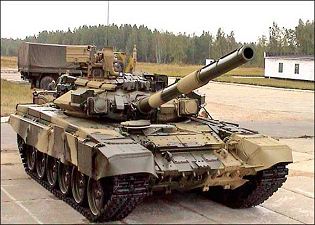
Derived from the T-72, the GPO Uralvagonzavod T-90 main battle tank is the most modern tank in the Russian Army's arsenal. The successor to T-72BM, the T-90 uses the gun and 1G46 gunner sights from T-80U, a new engine, and thermal sights. Protective measures include Kontakt-5 ERA, laser warning receivers, and the SHTORA infrared ATGM jamming system.
Gerald R Ford Class (CVN 78/79) – US Navy CVN 21 Future Carrier Programme, United States of America
In January 2007, the US Navy announced that the new class would be called the Gerald R Ford Class.
Gerald R. Ford class (or Ford class, previously known as CVN-21 class) is a class of supercarriers currently being built to replace some of the United States Navy's existing Nimitz-class carriers beginning in 2016 when CVN-78 is delivered to the U.S. Navy. The new vessels will have a hull similar to the Nimitz carriers, but will introduce technologies developed since the initial design of the previous class (such as the Electromagnetic Aircraft Launch System), as well as other design features intended to improve efficiency and operating costs, including reduced crew requirement. The first ship of the class, USS Gerald R. Ford, has hull number CVN-78.
A330-200 MRTT Future Strategic Tanker Aircraft (FSTA), United Kingdom
In January 2004, the UK Ministry of Defence (MoD) announced the selection of the AirTanker consortium under a private finance initiative arrangement to provide air-to-air refuelling services for the UK's Army, Navy and Air Force.
The tanker transporters will replace the RAF's fleet of 26 VC-10 and Tristar tanker aircraft which are approaching the end of their operational life.
IL-78 Midas Air-to-Air Refuelling / Transport Aircraft, Russia
Design and development
IL-78 Midas from 203rd Guards Air Refuelling Regiment
The Il-76 tanker was conceived as long ago as 1968, but the transferable fuel load for the initial version was only 10 tonnes, which was insufficient, so development was shelved. When the higher performance Il-76 became available the tanker project was restarted in 1982 as the Il-78.
Antonov An-70
The Antonov An-70 is a four-engine medium-range transport aircraft, and the first large aircraft to be powered by propfan engines. It has been developed in late 80th in Antonov design bureau to replace the obsolete An-12 military transport aircraft. Unfortunately the dissolution of the Soviet Union prevented the mass production of the type. Maiden flight of the first prototype took place on 16 December 1994 in Kiev, now independent Ukraine, and the plane was lost in less than a year. Numerous further attempts to start production haven't been so far successful.
Ka-60 Kasatka (Killer Whale), Russia
The Ka-60 Kasatka or Killer Whale helicopter is a medium weight transport helicopter developed by Kamov. Kamov helicopters are well known for the co-axial contra-rotating rotor design, but the Ka-60 has a single four-bladed main rotor with an anti-torque tail rotor. The Ka-60 is designed for carrying troops, weapons and ammunition to the battlefield, casualty evacuation and cargo transport using the external hook.
Kamov first unveiled the Ka-60 helicopter in 1997 and its first flight took place in 1998. The helicopter went on international display at the MAKS 1999 show held in Moscow. As well as the Ka-60 transport, Kamov has developed a civilian utility variant, the Ka-62.
La Fayette Class Frigate, France
The French Navy's La Fayette Class multipurpose stealth frigates were developed by DCN International (now DCNS) and built at the DCN Lorient Naval Dockyard. The French Navy awarded DCN the contracts to construct the La Fayette (F710), Surcoef (F711) and Courbet (F712) frigates in 1988, and Aconit (F713) and Guepratte (F714) in 1992.
The lead ship, La Fayette, was commissioned in 1996 and the last, Guepratte, was commissioned in November 2001. DCN have also built an anti-submarine warfare version for Taiwan (Kang Ding) and an anti-air version for Saudi Arabia (F3000S) under the Sawari II programme. All three have been launched and the first, Al Riyadh, was commissioned in July 2002.
SPYDER Surface-to-Air Launcher for PYthon 5 and DERby Missiles, Israel
Rafael Armament Development Authority, the MBT Missile Division and Elta Radar Division of Israel Aircraft Industries have announced the SPYDER surface-to-air PYthon 5 and DERby Air Defence Missile System. Rafael is the prime contractor and IAI the major subcontractor for the SPYDER program.
SPYDER is a low-level quick-reaction surface-to-air missile system capable of engaging aircraft, helicopters, unmanned air vehicles, drones and precision-guided munitions. It provides air defence for fixed assets and for point and area defence for mobile forces in combat areas. The SPYDER launcher is designed to fire PYthon 5 and DERby surface-to-air missiles.
Akash Surface-to-Air Missile System, India
The Akash (sky) is an all-weather medium-range surface-to-air missile (SAM) system developed in India. It provides multidirectional and multitarget area defence. The missile system was indigenously developed as part of the integrated guided-missile development programme (IGMDP). In operation from 1983 to 2007, the programme developed a range of missiles, including the Nag, Agni and Trishul missiles and the Prithvi ballistic missile.
In 2008, the Indian Air Force (IAF) introduced its indigenous SAM system after nine successful field trials. Some modifications to the Akash SAM, such as the launch platform, were made to the army version to meet mobility and gradeability requirements.
In June 2010, the Defence Acquisition Council (DAC) of India ordered Rs125bn ($2.8bn) of the army version Akash missile system for induction into the Indian Army.
Shenyang J-31

The Shenyang J-31, (or "FC-31 fifth Generation Multi-Purpose Medium Fighter")also known as "Gyrfalcon" , or "Falcon Hawk" by some military enthusiasts, is a twin-engine, mid-size fifth-generation jet fighter currently under development by Shenyang Aircraft Corporation. The fighter has also been referred to as "F-60" or "J-21 Snowy Owl" in some media reports.
The Shenyang J-31 (F-60) is a fifth-generation, multi-role, twin-engine stealth fighter aircraft being manufactured for the People's Liberation Army Air Force (PLAAF) by Shenyang Aircraft Corporation, an affiliate of Aviation Industry Corporation of China (AVIC). It is the second stealth fighter that China has indigenously developed after the J-20.The J-31 fighter jet is intended to provide advanced defence capabilities in close-air support, aerial bombing and air interdiction operations. It can also perform suppression of enemy air defences and can be used as a carrier-based fighter on aircraft carriers. Initial operational capability of the aircraft is expected in 2020.
Sukhoi SU-37
The Su-37 multirole, all-weather fighter aircraft demonstrator is derived from the family of aircraft based on the Su-27, which was developed in 1977 by the Sukhoi Experimental Design Bureau in Moscow and is in service with the Russian Air Force and a number of other countries. This family also includes the Su-27UB, Su-30, Su-33, Su-32FN and Su-35, and has the Nato codename Flanker. The Russian Air Force is currently operating two Su-37 aircraft.
Subscribe to:
Posts (Atom)


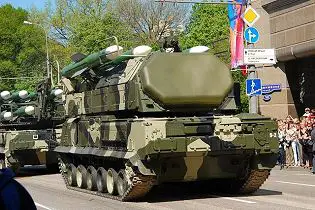

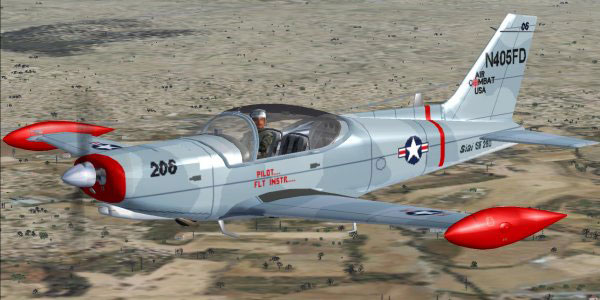


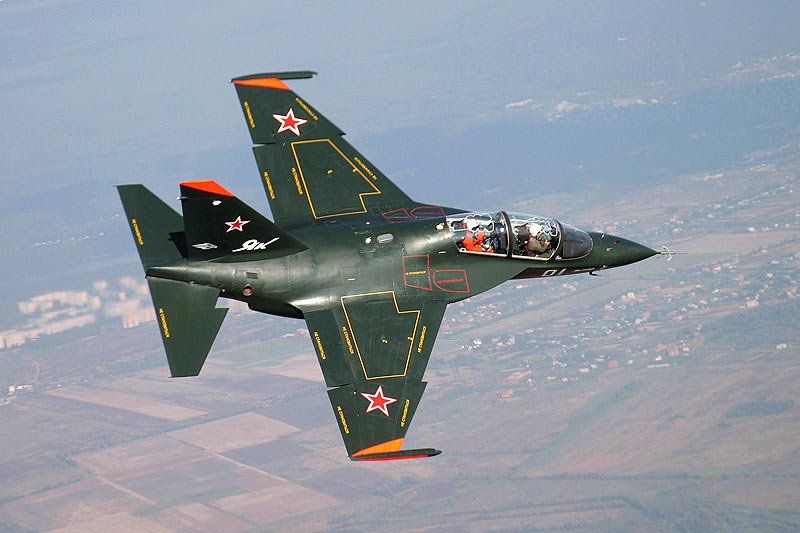
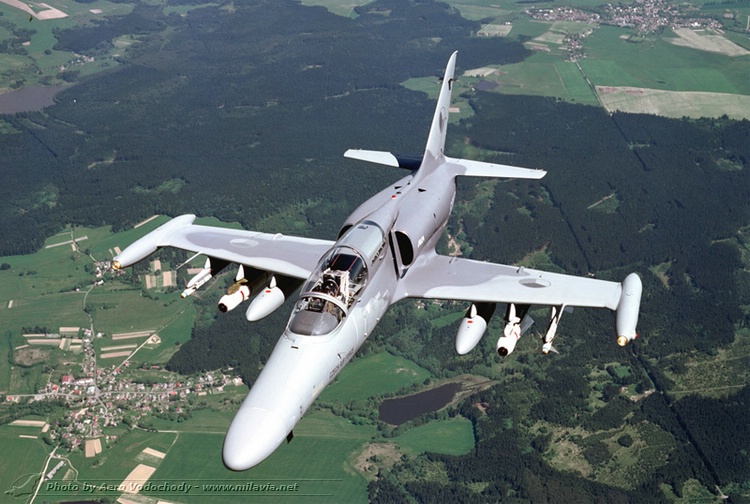








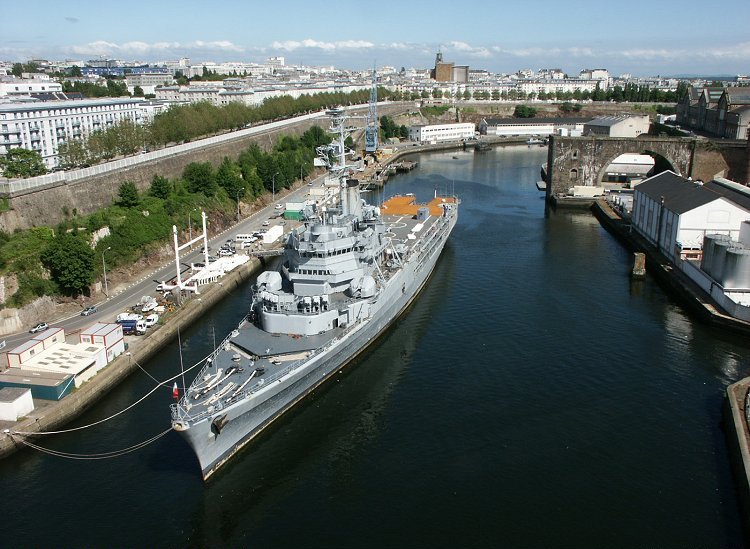



















.jpg)



